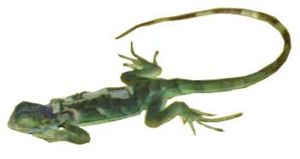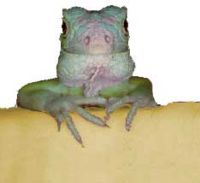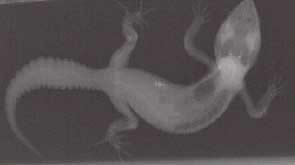Lizard Metabolic Bone Disease
| This article is still under construction. |
Introduction
Metabolic bone disease (MBD) is a complex disease that is associated with derangement of the metabolism of calcium, phosphorus and vitamin D3, poor husbandry and other diseases.
MBD is the most common disease in captive lizards, especially green iguanas; it is usually a result of poor husbandry. For example, deficiency in Vitamin D3 and/or UVB in combination with calcium deficiency leads to metabolic bone disease. Associated terms include fibrous osteodystrophy, nutritional secondary hyperparathyroidism, osteoporosis, osteomalacia and rickets.
Dealing with MBD
Examination
The clinical signs in green iguanas vary. They include:
- Lethargy and reluctance to move
- Difficulty in lifting body off ground
- Ataxia, paresis and paralysis of hindlimbs
- Poor appetite to anorexia
- Weight loss to poor weight gain
- Softening, swelling and deformities of bones e.g. soft mandibles
- Pathological fractures
- Muscle fasiculations and seizures
Diagnosis
Diagnosis is dependent on:
- History - dietary and environmental evaluation
- Physical examination
- Radiography - hypomineralisation of skeleton, pathological fractures, fibrous osteodystrophy
- Biochemistry - calcium is generally within normal limits but may be low, especially in neurological cases
Therapy
Correct environment and dietary problems and advise access to sunlight. Carry out supportive care. Attempt only conservative repair of fractures. Administer oral calcium for non-neurological cases - calcium glubionate (NeoCalglucon, Sandoz) at 1 ml/kg bw q12-24h for 1-3 months. Administer parenteral calcium for neurological cases, preferably IV or ICo by slow infusion (100-500 mg/kg q6h) and concurrent diuresis with serial plasma calcium and phosphorus measurements. Calcitonin has previously been suggested as a treatment - 50 iu/kg IM weekly for 1-4 weeks, but its clinical effects have not been established (do not give to hypocalcaemic patients).
Prevention
MBD is prevented by providing correct housing and diet. However, caging and dietary requirements vary depending on the species of lizard.


